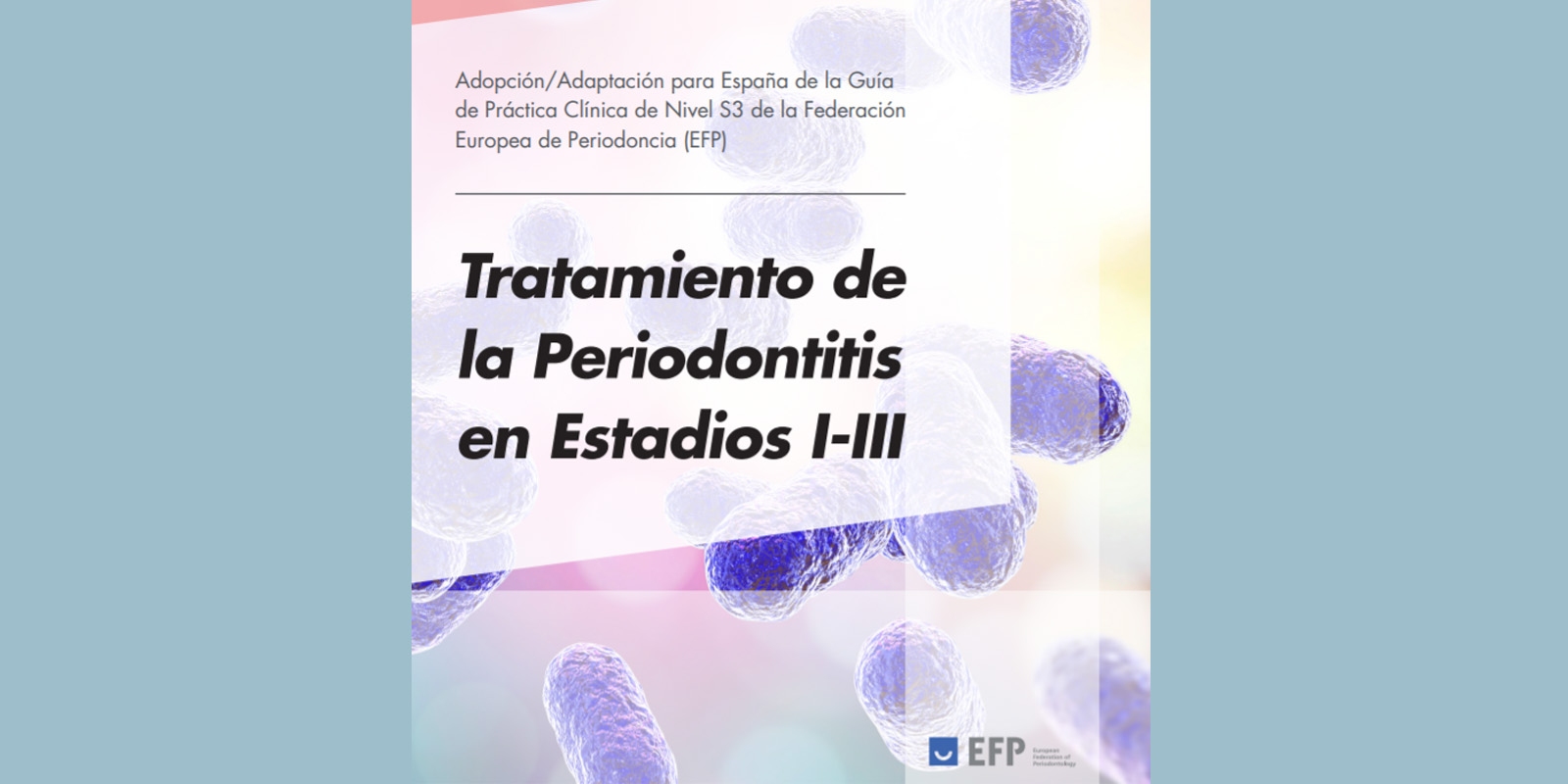DENTAID EXPERTISE
News for dentistry professionals
The dental office, a key ally for breaking the smoking habit
07 Oct 2021

In addition to being an enemy to health in general, smoking is also an important risk factor for oral health; not only does it significantly increase the risk of periodontitis and other oral diseases, but it also worsens the response to dental treatments. In the midst of a coronavirus pandemic, it is even more important to fight this habit, and the dental clinic can play a crucial role.
And, despite a slight decreasing trend in the smoking habit of people living in Spain, it is currently estimated that at least 1 in 5 people over the age of 15 smokes daily, with the consequent harmful effects on their general and, in particular, oral health. Therefore, the joint working group of experts of the National Committee for the Prevention of Smoking (CNPT) and the Spanish Society of Periodontology (SEPA) is providing a protocol to the more than 22,000 dental clinics currently existing in Spain to facilitate smoking cessation from the dental office.
“As healthcare professionals, we dentists have a responsibility to our patients who smoke, and we must address smoking, in the dental office, using appropriate strategies in each case to help them quit smoking, improve their general and oral health, and obtain a better response to any treatments performed“, emphasises Dr Antonio Bujaldón, president of SEPA, who stresses the need for “the oral healthcare team to be well trained and offer practical and easy-to-apply tools.”
A protocol that is simple, useful and necessary
Although there is ample evidence of the harmful impact of tobacco on oral health, being one of the main aggravating factors of periodontitis, studies show that there are still few dental professionals who are actively and routinely involved in the treatment of smoking, “not for lack of interest, but for lack of specific preparation or adequate training,” claims Dr Regina Izquierdo, coordinator of the SEPA-CNPT Working Group.
Based on this reality, and as explained by Leyre Gaztelurrutia, secretary of the Board of Directors of the National Committee for Smoking Prevention: “The dental office is an ideal place to identify tobacco use among patients and, likewise, to encourage them to begin a process of smoking cessation.” To facilitate this procedure, experts from SEPA and CNPT have designed a simple, quick and practical action protocol.
This document guides the members of the oral healthcare team in an effective, simple and practical way, in order to apply an intervention based on brief advice for smoking cessation. “Along with this”, continues community pharmacist, Leyre Gaztelurrutia, “motivational tools will be used as a method to get patients to quit, along with different strategies that provide a psychosocial approach, bringing about a change in behaviour, routine and lifestyle.”
The protocol can be applied to people over the age of 18 who smoke cigarettes, rolled tobacco, cigars, vaping devices and/or e-cigarettes, whether they are regular consumers or social smokers, and regardless of the number of cigarettes consumed per day. As indicated by Dr Izquierdo, “there are many reasons for getting involved in smoking cessation, as a large percentage of patients who smoke would like to quit, but the reality is that only a small group is able to do so without help. Educating, helping and accompanying the patient in this process is easy if you know how to approach [the issue]; plus, it is very rewarding.“
A goal in 7 steps
As shown in the protocol designed by SEPA and CNPT experts, the intervention for smoking cessation through brief counselling should have a maximum duration of 10 minutes and should be performed before the planned dental treatment, except in the first visit which will be performed at the end of it, once the patient’s needs for diagnosis and design of the periodontal / restorative treatment plan are met,…
It is essential to initially set action goals based on a relationship of trust with the patient who wants to quit smoking and get them motivated. It is proposed that smoking cessation visits be planned to coincide with periodontal treatment appointments.
At the first visit, a necessary interview will be conducted to assess the smoker’s condition and tobacco use, as well as to determine whether or not the patient wants to quit smoking; with all of this, data will be collected. In all cases, support will be offered, and printed material will be provided with brief tips on the benefits of smoking cessation.
At visit 2, the stage of motivation for change will be identified, the degree of dependency will be assessed, and the date of cessation will be marked; in addition, simple and personalised recommendations will be offered, and the patient will be informed of the transient effects of quitting.
At visits 3, 4, 5 and 6 (1, 2, 3 and 6 months after quitting), the aim will be to reinforce the benefit that comes from smoking cessation and provide the necessary motivation to continue or try again (the maximum risk of relapse is 3 months after quitting).
Finally, visit 7 ends the intervention (approximately 12 months since the cessation of smoking), being the optimal time to confirm the cessation of the habit, reiterate the benefit and offer the motivation to continue or to try again.
Through www.sepa.es it will be possible in the coming months to access a specific microsite developed by SEPA and its Foundation on this initiative. Throughout this web portal, dental clinics will be able to consult the protocol, download different management and informative tools, as well as register for training talks on how to implement the protocol in their workplace.
Impact on oral health
Successful patient adherence to this smoking cessation protocol will largely depend on the information they receive about the benefits of this intervention. And, in general, the harmful effects of tobacco on oral health are not well known, even though they are extremely common and significant. Tobacco affects oral health in a broad and very negative way: anywhere from aesthetic deterioration due to discolouration and the appearance of spots, halitosis, the increased incidence of caries, the risk of developing gingivitis, the exacerbation of periodontitis or the risk of losing dental implants, to an increased risk of oral cancer.
On the contrary, quitting smoking is always positive for the health of patients now and in the future. In the specific case of oral health, there are multiple benefits: it clearly reduces the risk of oral cancer and the incidence of oral leukoplakia, and a significant number of these lesions will even disappear after smoking cessation; it improves the sense of taste and smell and reduces halitosis; 4 to 6 weeks after quitting, the vascularity of the gums begins to recover and, after a year, the gums return to their normal appearance and anatomy.
Dentists often require many regular patient visits, as dental treatment, and in particular periodontal treatment, requires several sessions to be completes properly. “This provides us with multiple opportunities to motivate and educate patients, as well as to apply different intervention strategies and be able to support them in their effort to quit smoking,” says Dr Miguel Carasol, periodontist and scientific coordinator of the SEPA working groups.
In times of COVID, even more important
If any time is a good time to quit smoking, without a doubt, it’s now; the coronavirus pandemic is the ideal situation to drop this harmful habit for good. The growing evidence that links smoking with a worsening of COVID-19, as well as identifying it as a possible risk factor for becoming infected with SARS-Cov-2, further reinforces the measures aimed at promoting smoking cessation.
“If smoking was bad for your health before the coronavirus pandemic, now it is an even greater threat,” says periodontist Regina Izquierdo, who acknowledges that “quitting smoking is not going to be an easy task and, realistically, it is difficult to achieve it on the first try. For this reason, on many occasions it is necessary to consider seeking external help”.
In the opinion of the SEPA representative, “if there have been previous attempts that have not worked or if the smoker feels unable to do it alone, it should be borne in mind that the dental office is also an ideal setting in which smoking cessation therapies based on advice, support and follow-up can easily be applied”. And, according to Dr Izquierdo, “Our tasks and abilities involve providing health education and motivation for (oral) hygiene and nutrition to our patients on an ongoing basis.”
SEPA wants to send out the message for all oral healthcare team members that, in addition to making a correct diagnosis and carrying out any conventional treatments that are necessary in each case, it is also a priority to control any modifiable risk factors that are related to the onset of oral problems and that worsen the quality of life of patients, and, among them, smoking is one of the most common and serious due to its consequences.
Smoking in Spain
According to the World Health Organization (WHO), smoking is a chronic addictive disease that can evolve with relapses. This addictive disorder constitutes one of the main public health problems among humans, as it is a serious and disabling condition that simultaneously affects the entire body, while it is the leading cause of preventable death; in fact, it is the main risk factor for two major causes of premature death: cardiovascular diseases and cancer, and also for chronic obstructive pulmonary disease. The SARS-CoV-2 coronavirus (COVID-19) pandemic has witnessed the greater risk of smokers to develop COVID-19, which is an added incentive to quit smoking.
According to data collected in the latest European Health Survey in Spain (EESE), from 2020, 19.8% of the population aged 15 years or over smokes daily (23.3% men vs 16.4% women), although a somewhat downward trend has been maintained in recent years (23% in 2014); Furthermore, it is evident that 2.3% are occasional smokers, 22.0% are ex-smokers and 55.9% have never smoked. The percentage of daily smokers reaches its maximum in the 25- to 34-year age group among men (30.9%) and in the 45 to 54 year age group among women (23.8%). The autonomous communities with the highest percentage of daily smokers aged 15 and over in 2020 are Extremadura (25.3%), Murcia (23.7%) and Andalusia (20.9%), and those with the least are the Basque Country (16.1%), Galicia and Community of Madrid (both 17.7%).
As the president of SEPA emphasises, “trying to provide adequate oral health to everyone is part of the 2030 Agenda and the Sustainable Development Goals, which includes number 3 of Health and Well-being. It is essential that we understand that people, holistically, must be at the centre of the healthcare process; in this sense, the dental office is the perfect place to reinforce primary prevention and to promote oral and general health”.
To access the protocol, click here
More information on smoking cessation and oral health, here
RELATED ARTICLES

17 Feb 2022
EuroPerio Series: professional discussions and scientific exchange
To keep the global perio community up to date with the latest research findings as well as give a taster of what is to come at EuroPerio10, the…

21 Jan 2022
Xerostomia in COVID-19 positive patients: clinical considerations
Severe Acute Respiratory Syndrome Coronavirus 2 (SARS-CoV-2) the cause of the pandemic known as COVID-19, affects different organs and systems (lungs,…

20 Jan 2022
A guide adapted to Spain to optimise the approach to periodontitis
There are currently numerous clinical practice guidelines to direct the treatment of many systemic diseases (such as diabetes, depression,…
Sign up for the DENTAID Expertise newsletter
Sign up for the newsletter